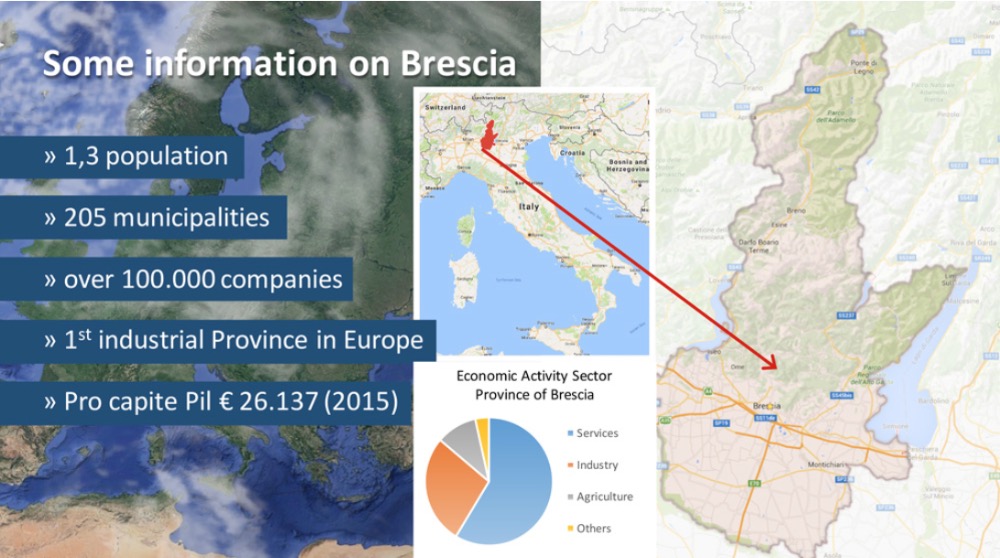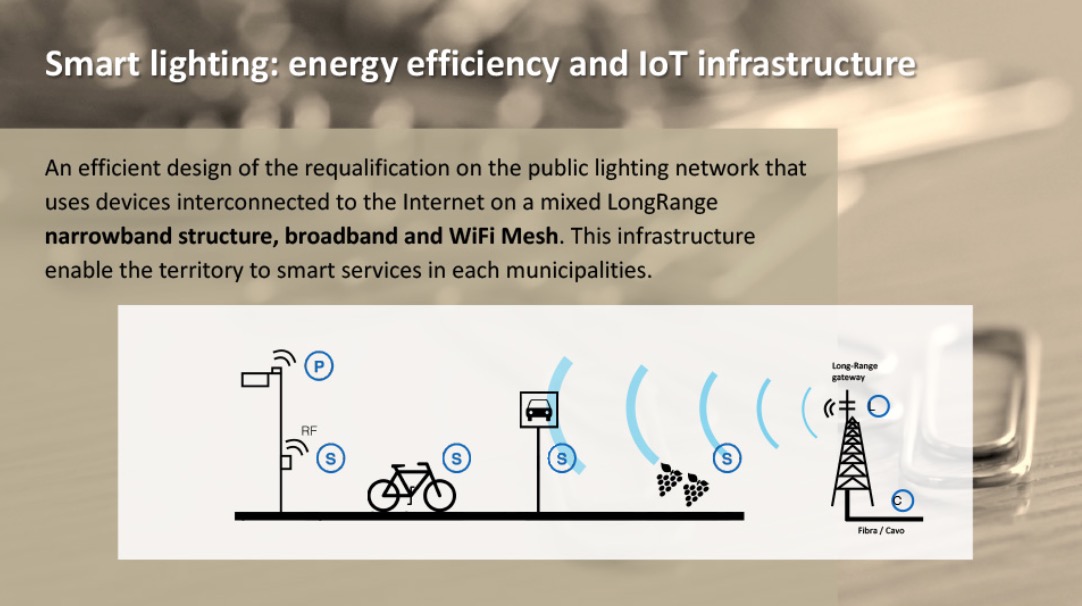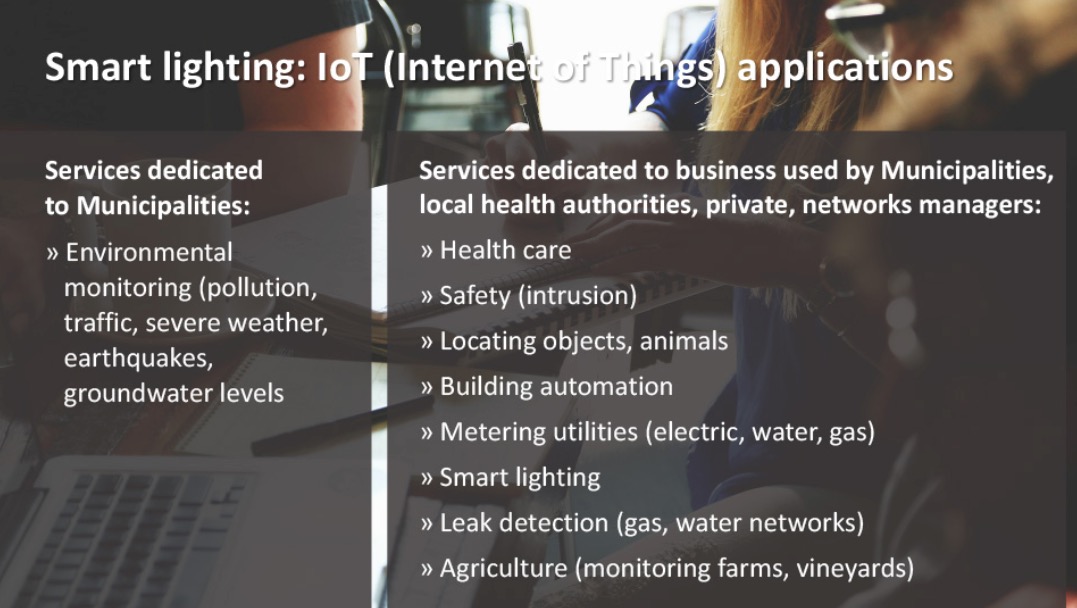Abstract
This article reports the attempt of the Province of Brescia of experimenting new governance models together with surrounding municipalities in order to improve quality of public services even with heavy finance cutting.
The basic idea is to aggregate the expenses of local governments in order to gain scale economy but also to focus on digital transformation approach to reduce management costs and increase quality of service.
Province of Brescia has been experimenting this new approach in smart lighting and libraries management, but, more in general, in the eprocurament of goods and services. Province of Brescia is also changing the approach of data management, moving to a single shared platform designed to support decision making. Finally, it has organized a network of people, partners and skills to access EU fundings to boost and support this reorganization of local public services.
1.Foreword
The economic and financial crisis which started some years ago first hit the banking system, but soon broadened to private and public sector. Consequently, all over Europe national and local governments started to reduce investments and cut current expenses, a new governance phase had started which is still going on. But at the same time citizens and companies started demanding more and more support from public sector to sustain social and economic development. So, how to face those contrasting needs ? How to increase quality of services with less money and human resources ? Can public administration still play its own role of ‘engine of development’ during the new economic revolution in the era of globalization, internet, sustainability and digital transformation ? Yes, we should be optimist and looking at some positive experiences to focus new governance models that allow to face those problems and take the opportunities the new scenario is offering.
2.Vision
In this evolving scenario local governments still can play an active role in the economic and social development of their own communities but they need to identify a different approach to face needs and find solutions. As a matter of fact the continuing lack of financial resources and skills, the cutting of human resources and the increasing demand of services from citizens and companies force municipalities to practice new governance models. A promising solution is to identify common needs in a wide area, share available resources of the municipalities of that area, and move to a single design, tender and deploying of service. This aggregation will help to save money, to attract private partnerships, but also to guarantee uniform service level in a given territory. Besides, digital transformation is offering another dimension of optimization: a digital by-default design of new public services is going to ensure higher savings and better meet the expectations of modern, high performance and smart services from the citizens.

Such an approach can allow local government to sustain non-urban communities to gain benefits from globalization keeping high the quality of life of their citizens and keep high the competitiveness of their local companies. In other words, this approach can allow local communities to reduce the gap with metropolitan areas and contribute to a sustainable economy in our country.
3.Case study
Province of Brescia has tried to experiment the application of this new governance model. So, in the last two years has invested in increasing the interaction and cooperation with the municipalities in the county area in order to identify common needs and, consequently, design and develop single and shared solutions.
In Italy the Province is an intermediate level of government which is facing a reforming process where the legislator is going to emphasize Province role of facilitator and service to the front line government represented by the municipalities.

According to this new mission, Province of Brescia, after an initial phase of analysis and discussion, developed a strategic action plan based on the following 5 action lines:
- Design and implement smart lighting service for a group of around 30 municipalities;
- Consolidate and widen the services provided by a network of libraries (now around 600 libraries) totheir citizens;
- Develop a joint and distributed office to access European fundings;
- Integrate the existing procurement offices (6 different local authorites) into a single one that providesgoods and services for all municipalities in the province;
- Design and implement a common platform to collect open and big data in order to sustain publicadministrators in decision making.
This joint approach seems to overcame the lack of skills and financial resources that usually prevents each single municipality to face properly the above mentioned needs. So, in the past quite often the result was that a single municipality was slow in modernizing the public services, was not able to attract private investments, neither was able to select best performance offers from the market. Now instead, the aggregation of the public expense and consequently the increasing of the value and dimension of the tender raises more interests to the private companies. The aggregation of the initiatives also allows to have access to higher quality designing, so the tender is more likely to select innovative proposals of public services and products. Let’s try to better explain how those concepts can be implemented in the case of smart lighting.
Smart Lighting
The lighting system in our municipalities is often an old system which needs to be requalified, that is the pole must be repaint and fix, the lines must be put underground and the meters must be revamped. Furthermore, nowadays the LED technology offers the chance to reduce the energy consumption of around 60% which means a great opportunity of savings in the public budget. LED technology also offers better light into the street and lower emission of CO2 so this operation could be both a cutting cost initiative but also an environmental sustainable initiative.
But in order to start this virtuous process, the municipality needs to have money to finance the initial investment, which usually municipality cannot afford. So how to solve this problem ? How to find the investors to finance this valuable initiative ? This is the case to start PPP – Private Public Partnership, that is to select a private investor able to finance to requalification of the lighting system, and give him the right to manage the system for around 15 years payed by the municipality. But let’s see more in detail what Province of Brescia has done.
First we identified those municipalities which had an old lighting system, then we presented them the idea and convinced them to be part of a single initiative. We helped them in collecting all the necessary economic and technical data to design a single preliminary draft. Then we looked for a potential contributions from other institutions, and finally we built a tender to select a private partner to whom give the management for 15 years. We developed a business plan to show that in 15 years the municipalities could afford a rate able to finance the LED acquisition, the management and also the development of a digital infrastructure able to serve smart services. This single project for around 30 municipalities shows the following numbers: around 250.000 poles, 13 million euro of investment, 27 million euro of maintenance in 15 years, and around 2 million euros of digital infrastructure.

But what is this digital infrastructure ? What is it for ? Our idea is to put digital devices up the poles to create a cloud of connectivity along the road able to communicate with every sensors. This low consumption energy network implements the IoT paradigm (Internet of Things). Upon this network you can develop many different applications: from traffic monitoring, to smart parking; from pollution monitoring to landslides or floodings monitoring. But also smart metering and smart agriculture. In other words, the digital infrastructure enables the implementation of digital transformation of every process in private and public organizations. This revolution is changing our society and will affect more and more our lifestyle and work in the near future.

Let’s now examine other different initiatives that show new possible governance models for local governments in order to face the requests of services from citizens and companies against the lack of money and skills.
Eprocurement
In order to optimize the local public expense, in the late 2015 Province of Brescia launched a shared eprocurement office to manage tenders on behalf of municipalities. Today, we already have 81 municipalities that have joined the initiative and during the 2016 we have published and completed more than 130 tenders for around 90 millions of Euros. Recently, we have also started the integration with the existing others 5 contracting authorities in the province to build a single eprocurement authority for more than 130 municipalities. The goal is to share skills, human resources and tools, but also to aggregate tenders in order to gain higher scale economy in each tender. The tenders’s objects are very varying: from canteen services in the schools, to road maintenance, from school bus service to social assistance or waste collection service. As above mentioned the aggregation is expected to offer higher scale economy but also more uniform service level in the territory.
Network of libraries
Nowadays, in the era of internet, it seems old to talk about paper books and physical libraries, but actually it is still an important free service offered to citizens to support them to access knowledge. This is even more true if we refer to citizens and families living in a small village outside metropolitan area. Sometimes in the recent years, public administrators have been tempted to reduce or even cut this public service due to lack of money, but Province of Brescia has invested on this network in counter-trend. So, today we have a network of around 600 libraries, spread in four provinces (Brescia, Bergamo, Mantova and Cremona) which share a single ICT platform to deliver online services for the management of catalogues and for letting users borrow a book. We have a catalogue of around 5 million books and we manage around 2 million loans per year. Currently we are implementing an innovation project to transform the library in a place of meeting among young, elderly people, professionals, private companies and institutions in order to share skills, ideas and discussions around the priority of the territory. The idea is to let the library play a role of supporter of innovation and change management in the small villages in order to shorten the gap between the knowledge in those remote areas with the fast and new trends coming from global economy.
Shared European Office
The EU Commission has granted around 454 billion euros for the time period 2014-2020 (around 44 billion available for Italy) to sustain companies competitiveness, employment increase and social development. But the competition, to access that amount of money, is becoming more and more higher among the 28 countries of EU. Furthermore, it is more and more difficult for small local governments and micro enterprises settled in
non metropolitan areas due to lack of skills and low impact of those micro proposals. So, Province of Brescia has launched an initiative to develop a Shared European Office as a network of people, professionals, companies, institutions and universities which cooperate as a single logical unit even if distributed in our territory. The goal is to identify opportunities in European fundings announcements and match them with local priorities. In the 2016 we have managed to succeed with over 5 projects for an amount of fundings of over 60 million euros.
Big Data and Open Data
In order to better manage the introduction of new technologies in local governments, Province of Brescia has launched a joint initiative with more than 190 municipalities. It is named, Shared Innovation Center, that is a team of professional people which are in charge of designing, developing and offering a set of ICT services to municipalities. Those services allow citizens and companies to interact online with local governments when they need to pay taxes, to ask for documents, authorizations, or simply to have information. At this link you can have a look about the current portfolio of services offered as well as the special ongoing projects http://cit.provincia.brescia.it. Since in the near future the management of data is going to became one of the most important requirement to take decisions, Province of Brescia is designing a digital platform where to collect data, videos, maps and documents coming from its own offices but also from the municipalities in the various field (environment, culture, tourism, traffic, education, work etc). The aim is to enable an open platform showing public information connected to all the data that will come from IoT worlds (the so called Big Data) in order to allow business intelligence and analytics for decision making support.
4.Conclusion
The above mentioned initiatives show that Province of Brescia is trying to experience a new governance model in his territory in order to face budget cutting without reducing public services. The core of this new governance model is based upon the idea of cooperation among local governments and digital redesign of public services. That’s why Province of Brescia launched a Local Digital Agenda: to promote the culture of innovation among citizens, private entrepreneurs and public managers; but also to contextualize the globalization concepts into the specific local economy and society in terms of well defined projects and services.
This approach enable the fulfillment of another critical success factor: sustainment of PPP in non-urban areas. So far, there are great examples of PPP in big metropolitan areas but usually there is no great attraction of investors in non urban areas due to limited value of business. The aggregation of resources and the innovation of requests is promising to attract public and private investors.
The digital transformation of public services is the leading direction to keep high the quality of life of families living outside metropolitan area and to sustain the competitiveness of small companies settled in those areas.
Last but not least, sustainability and inclusion have to became a must in the designing approach of each new private and public service in order to impact toward a true and effective development of our communities.